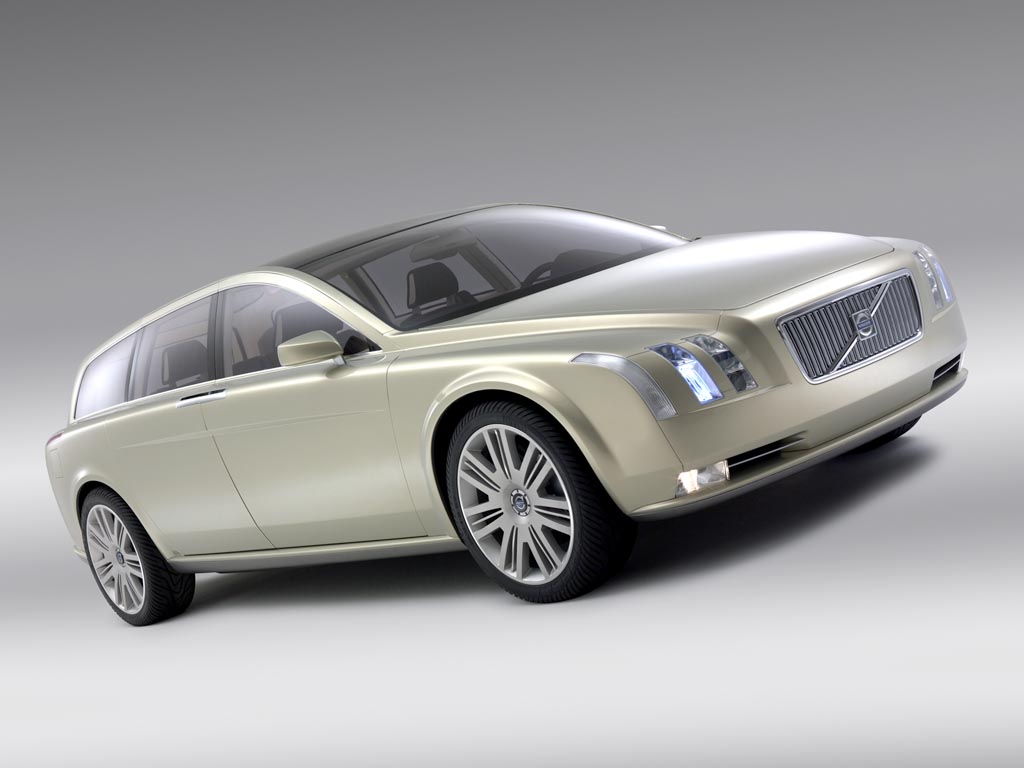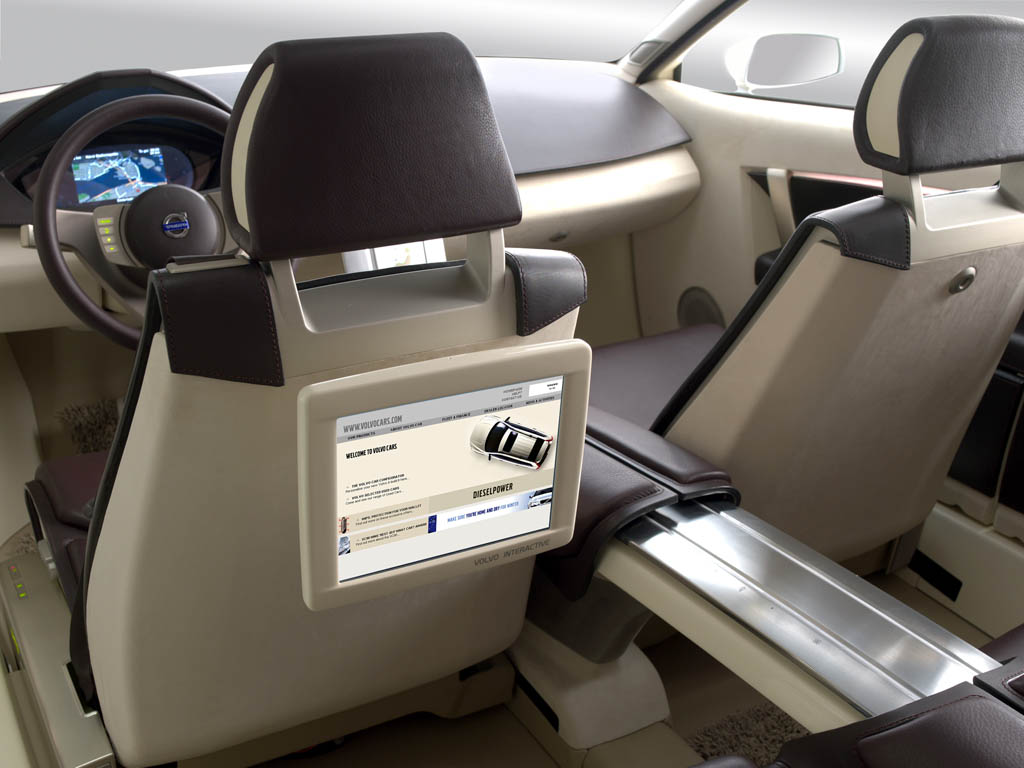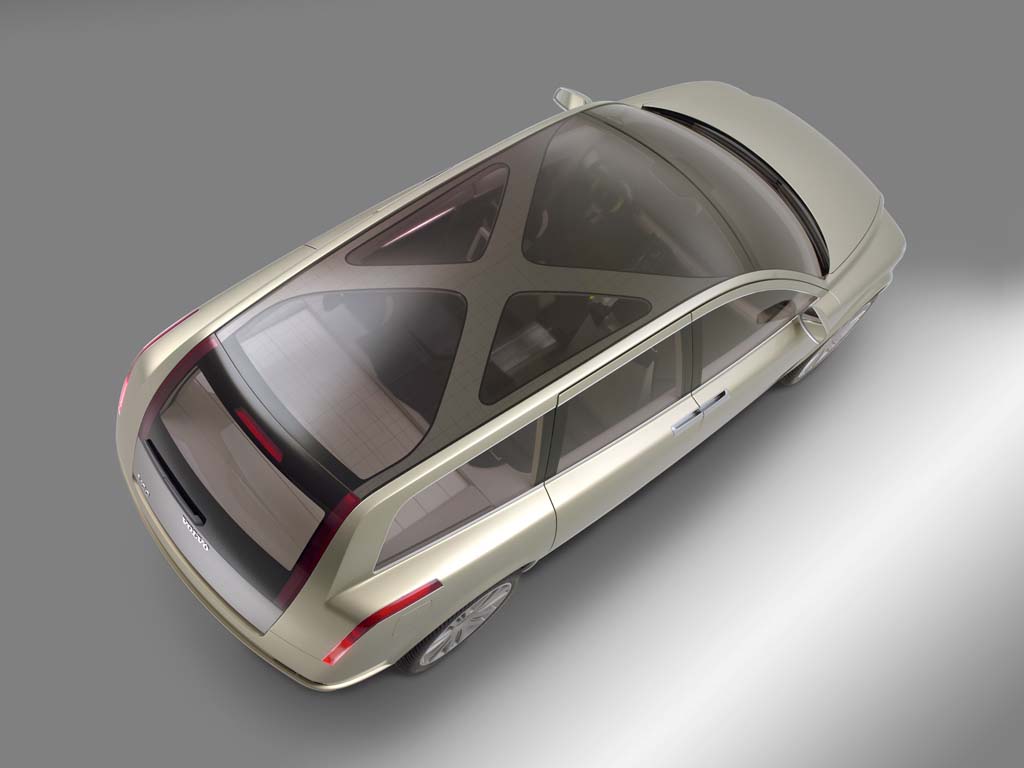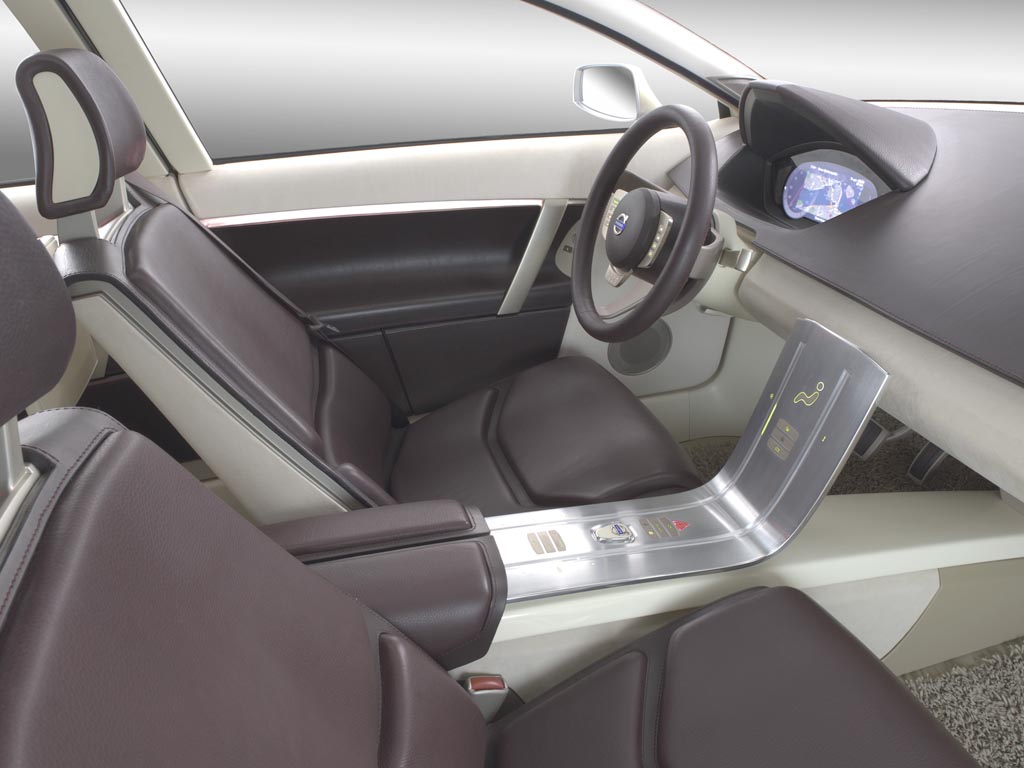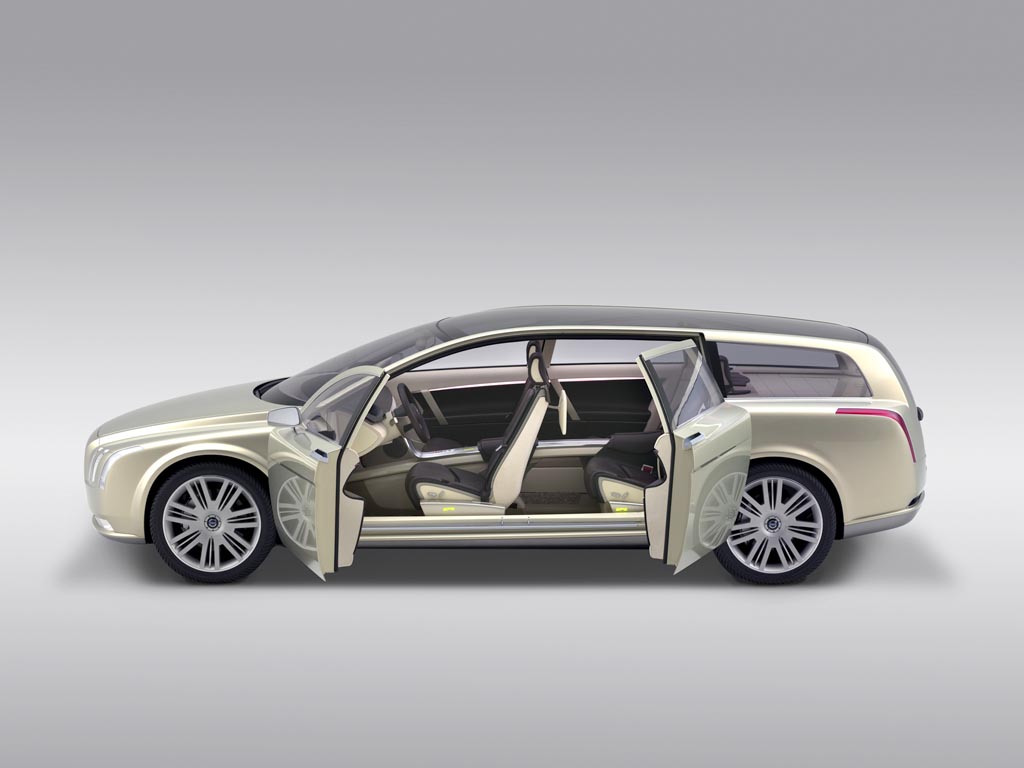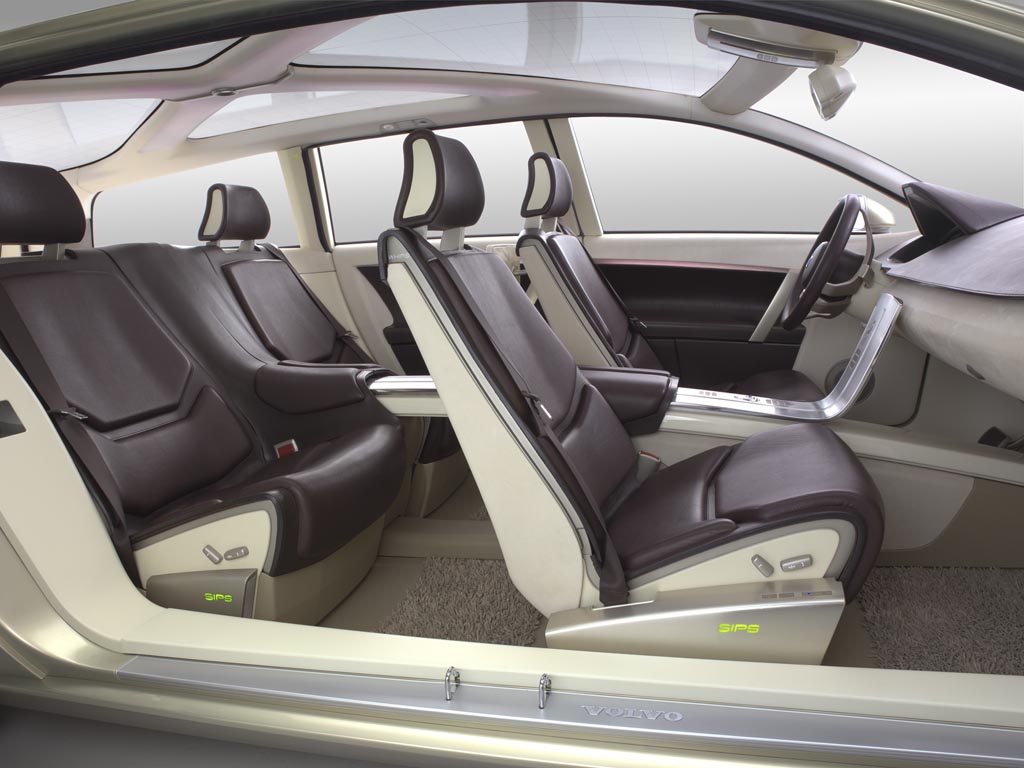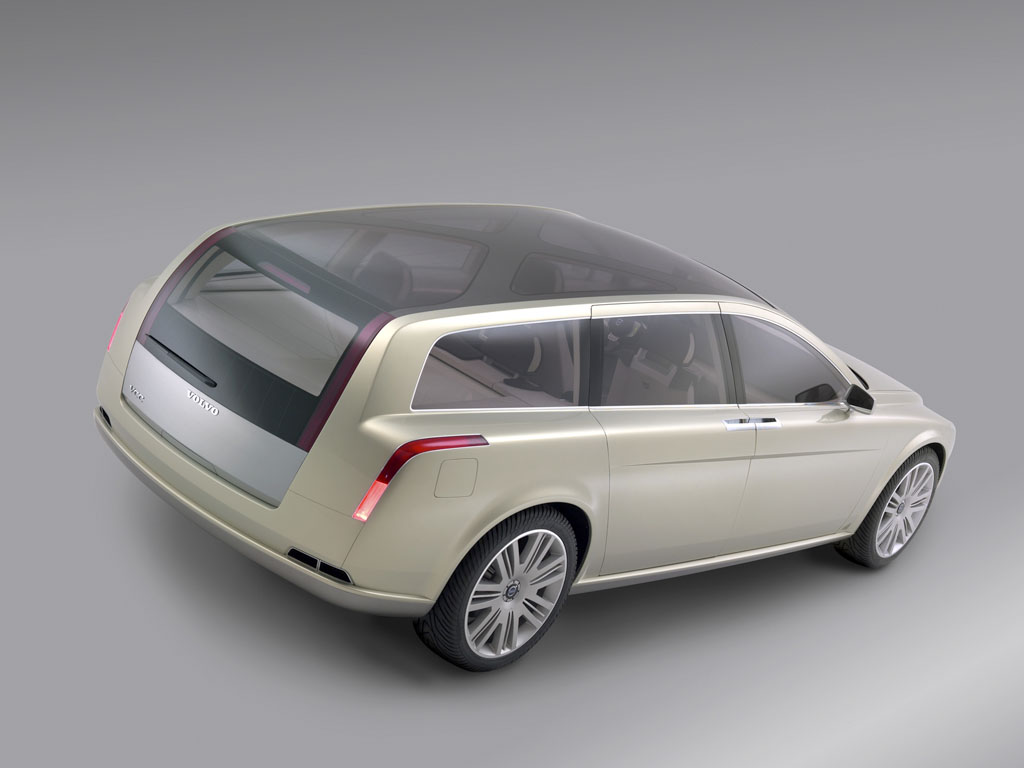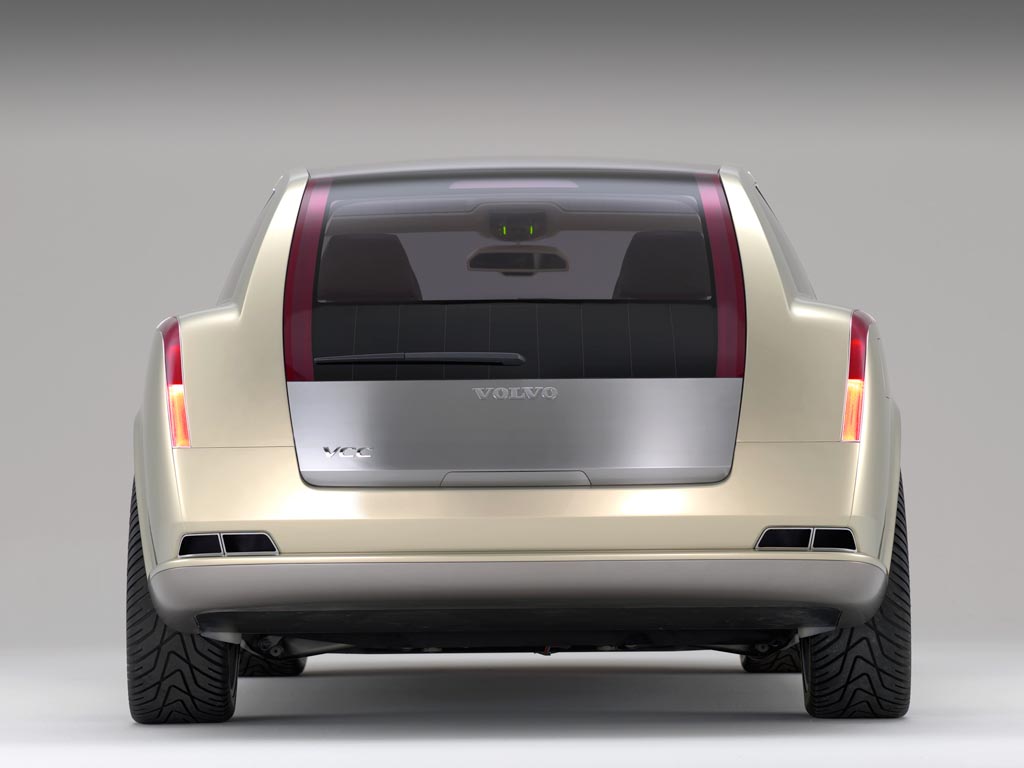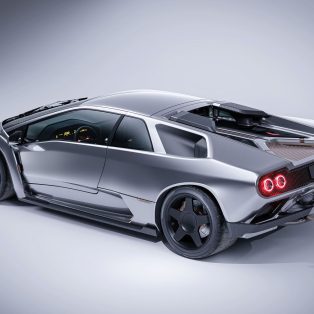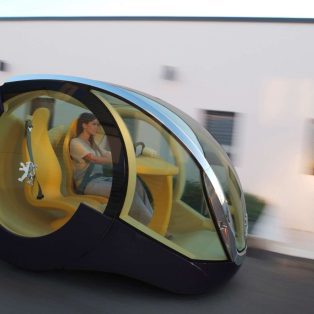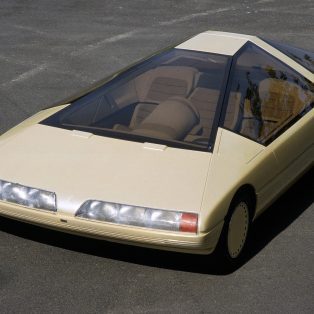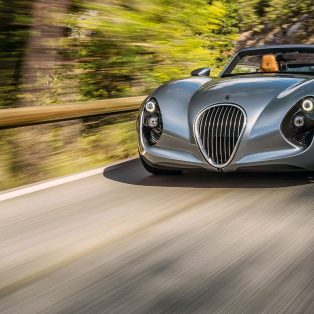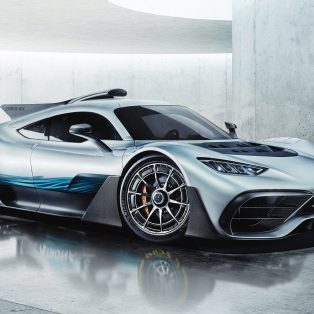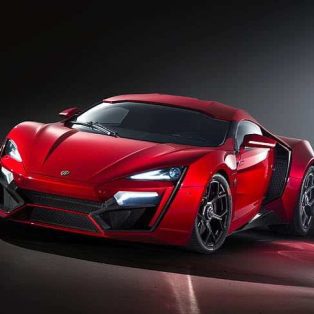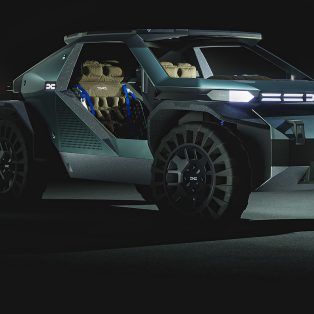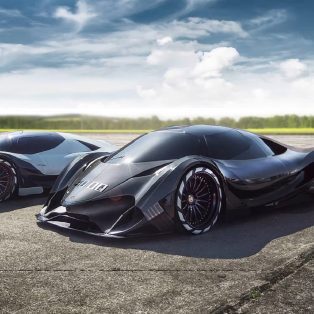2003 Volvo VCC Concept
A hint of the future of Volvo car design was unveiled amid a flurry of photographers’ flashbulbs at the 73rd Geneva International Motor Show.
The Volvo Versatility Concept Car (VCC) takes the estate concept to new levels of performance, technology and luxury.
The exterior design of the Versatility Concept Car (VCC) is both dramatic and simple; perhaps a reflection of the fact that two of Volvo’s design studios have joined forces in its creation: Barcelona in Spain and Sweden.
A number of characteristic design elements ensure that no one is going to miss the fact that this is a Volvo.
Bold Design
Among the most noticeable features in the front are the slim, vertically stacked headlamps. The inner of the two lamps uses a system known as Static Bending Light with three light units aimed at different angles. The top fixture points straight ahead and performs as a conventional dipped beam. As the car turns, however, sensors linked to the steering activate units two and finally three to illuminate the direction in which the car is headed. This system carves out a superior light pattern in the dark when driving on twisting roads, thus boosting safety standards. The outer headlamp contains main beam and side marker lamps.
The indicators front and rear and door handles echo the linear character of the headlamps, and are visually connected via the ‘Volvo Arch’. The 20-inch wheels have puncture-safe ‘Run Flat’ 245/40/20 tires from Pirelli.
The VCC design is also characterized by the absence of a B-pillar, made possible by hinging the back doors at the rear instead of the front. This design promotes the display of the remarkable interior, but is, for safety reasons, not intended for production cars.
The interior of the VCC is an expression of Scandinavian luxury translated into Volvo’s own design language; a sensation of well being that stems from high-quality materials, light, airy interiors and an all-round ‘sensorial’ experience.
Less is more…
The Versatility Concept Car is also a reaction to the trend towards stacking increasing numbers of functions and controls in the center console. In the VCC the amount of controls on the center console have been reduced to only the climate unit and security functions, showcasing Volvo’s excellent ergonomic design heritage and Scandinavian simplicity. The sliders, controlling the temperature and fan speed, are designed to give the user a feeling of well being, and of being in control of a very high-tech system.
All other information is available to the driver in the display module, which features digital instruments of analogue design for speed, rpm, engine temperature and fuel quantity. These gauges are a digital interpretation of the metal dials in Volvo’s performance cars: the S60 R and V70 R.
The digital screen for the instruments provides added flexibility; when the driver wants to use the navigation system, a map is superimposed over the speedometer readout and rev counter. In the same way, the display can create a pop-up window containing information about the music being played in the audio system.
When the car is started, the system confirms that the car’s safety systems are functioning properly by displaying all their icons in the display screen: WHIPS, SIPS, IC, DSTC, SRS AIRBAG. The driver controls the various functions via controls grouped around the steering wheel hub, and via conventionally positioned stalks on either side of the steering wheel.
The Volvo Ambient Air Cleaner
Emissions from today’s modern gasoline engines are in many cases cleaner than the surrounding air, particularly in polluted city centers. In the Versatility Concept Car (VCC), Volvo Car Corporation presents entirely new technology that exploits this fact by filtering the surrounding air from the presence of two environmentally hazardous substances: hydrocarbons (HC) and nitrogen oxides (NOx). The technology is called the Volvo Ambient Air Cleaner (VAAC). Its benefits include:
-Filters hydrocarbons and nitrogen oxides from the surrounding air -Neutralizes the equivalent of up to 3 cars’ exhaust emissions in pollutant urban conditions -Powered by solar cells when the car is parked
The basis of VAAC is a container installed in the engine compartment, into which two filters are placed. While driving, the car’s ventilation-system fan sucks in air from the surroundings and directs it through the filters, which traps the nitrogen oxides and hydrocarbons, thereby cleaning the air before it enters the passenger compartment. When the filters are filled, they are heated to 150 degrees Celsius using the heat from the engine’s exhaust system. The nitrogen oxides and hydrocarbons are then released from the filters and routed to the engine. The hydrocarbons are combusted in the engine cylinders, while the nitrogen oxides are reduced in the car’s catalytic converter.
In order to increase the VAAC system’s efficiency, the Versatility Concept Car is equipped with a sensor that monitors the ambient air outside the vehicle. When a given level of pollution is detected it activates the fan in response. This happens regardless of whether the car being used or not, since solar cells mounted on the roof power the ventilation-system fan even when the car is parked. The system can thus adsorb hydrocarbons and nitrogen oxides even with the car’s engine switched off.
The VAAC system can operate continuously for two days during normal urban conditions before the filters reach capacity. Their contents are then automatically discharged to the engine. ‘VAAC requires a well-functioning, modern gasoline engine for the system to work efficiently,’ explains Jan Karlsson, project leader for VAAC development at Volvo Cars. ‘With an engine of SULEV (Super Ultra Low Emission Vehicle) standard, the Versatility Concept Car neutralizes the hydrocarbon emissions produced by up to three other cars, and thus helps clean up the surrounding air.’
Roof onto the open skies
The roof panel features an X-frame with ambient lighting. It is operated by slider controls in the overhead console. An illuminated IC (Inflatable Curtain) logo offers another reminder of the safety system incorporated in the roof panel.
The solar panel in the roof is semi-transparent and enhances the feeling of spaciousness, as well as providing power for the Volvo Ambient Air Cleaner (VAAC) system. This continuously cleans the air within the car even when the engine is not running (see VAAC release).
High Performance with Low Consumption
The Volvo Versatility Concept Car (VCC), demonstrates that high performance no longer needs to go hand in hand with high fuel consumption and high environmental impact. The VCC concept engine, an in-line direct-injected six-cylinder turbocharged powerplant displaces 2.6 liters and produces an impressive 250 hp; yet consumes no more than 6.5 liters of fuel per 100 kilometers. ‘New innovative engine and transmission technology makes this extremely low figure possible in a ten year perspective,’ states Derek Crabb, Vice President Powertrain Engineering at Volvo Car Corporation.
And now with the Versatility Concept Car (VCC) it is time to show that a large, luxurious V-Range car from Volvo can have a clearly marked pro-environmental profile. The exceptionally low fuel consumption, at just 6.5-litres/100 km in a car topping 1300 kg, is achieved through a range of new technologies. And while these technologies are not yet ready for production, Volvo Car Corporation is currently evaluating them within a 10-year availability timeframe.
The base engine, an in-line direct-injected six-cylinder unit with a displacement of 2.6 liters, features new turbo technology that puts the emphasis on combustion efficiency. This technology makes greater use of positive boost pressure to clear the combustion chamber of all traces of exhaust gases, thus improving the efficiency rating. The higher compression ratio is on a par with that of a naturally aspirated engine.
Direct Start&Stop means that the engine cuts out when the car stops, such as at a traffic light or in a stationary line of traffic. When it is time to move off again and the clutch is at the drag point, fuel is injected directly into the engine, which ignites the mixture immediately and gently accelerates the car.
Compression Auto Ignition (CAI) harnesses the benefits of a big engine to cut fuel consumption and lower exhaust emissions, however contradictory that might at first sound. The system creates a lean and homogeneous fuel/air mixture that is compression-ignited when the engine is being run on part load and at low to medium rpm.
Automated Shifted Manual is a regular manual gearbox that can be shifted automatically with the help of electronically controlled actuators. The driver can thus use it exactly like a conventional automatic transmission. However, since a manual gearbox has a higher efficiency rating than an automatic – because the frictional losses are lower – the end-result is lower fuel consumption.
The torque-loss problem that arises at the moment of shifting in an automated manual gearbox has been solved in the VCC’s concept engine with Electric Drive (ED). The ED unit, which is powered by a separate 42-volt battery, also provides extra propulsion power at low revs, before the turbocharger has reached the necessary boost, thus eliminating the problem of turbo-lag.
Electric Drive also gives the battery a free charge of energy. When the driver lifts off the accelerator to reduce speed, the car’s forward motion powers the ED unit that in turn recharges the 42-volt battery. This energy can be used, for instance, to drive the Versatility Concept Car for short distances on electric power alone, for example at very low speeds when crawling forward in congested traffic. The ED unit can be installed either on the driven axle or directly on the rear wheels.
In the Versatility Concept Car, the above technologies are combined with the use of lightweight materials, mainly aluminum and carbon fiber. The result is a ten percent reduction in weight compared with a similarly sized Volvo S80.
In Detail
| engine | Turbocharged Inline-6 |
| displacement | 2600 cc / 158.7 in³ |
| power | 186.4 kw / 250 bhp |
| specific output | 96.15 bhp per litre |
| bhp/weight | 192.31 bhp per tonne |
| f brake size | mm / in |
| r brake size | mm / in |
| curb weight | 1300 kg / 2866 lbs |
| gear ratios | :1 |
Stories by Volvo Cars of North America
Above Images ©IMAGE CREDITS – Volvo Car Corporation





